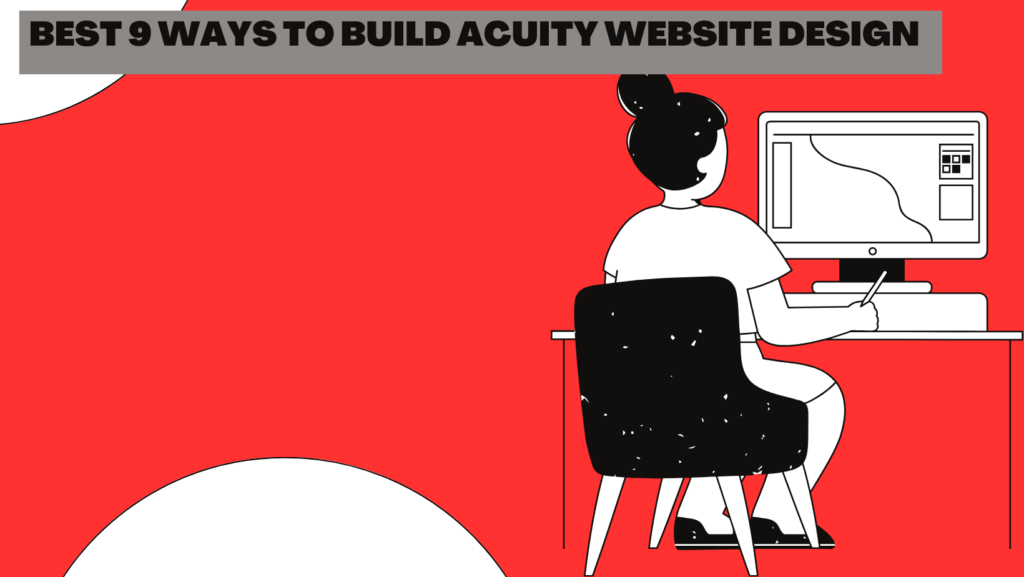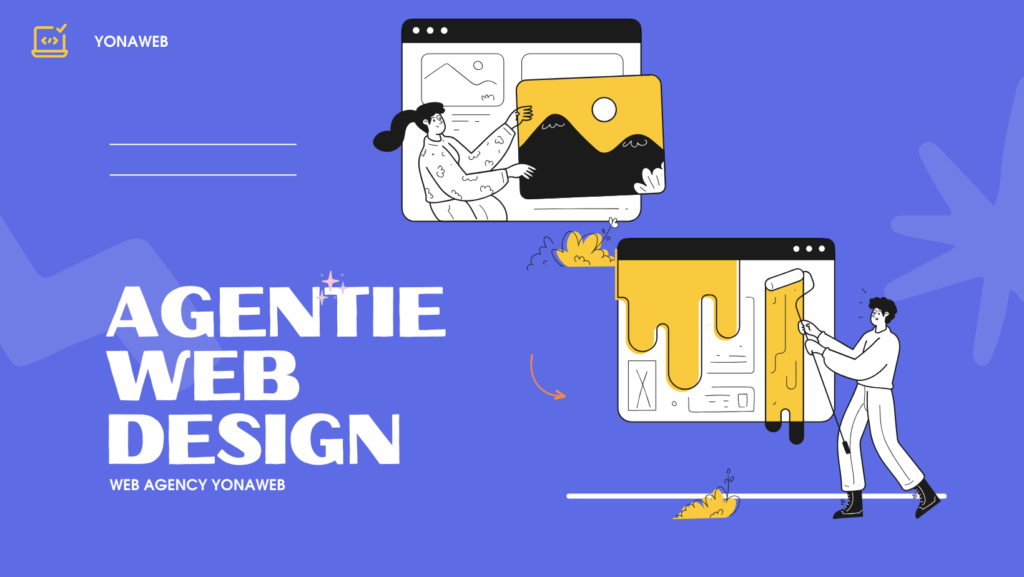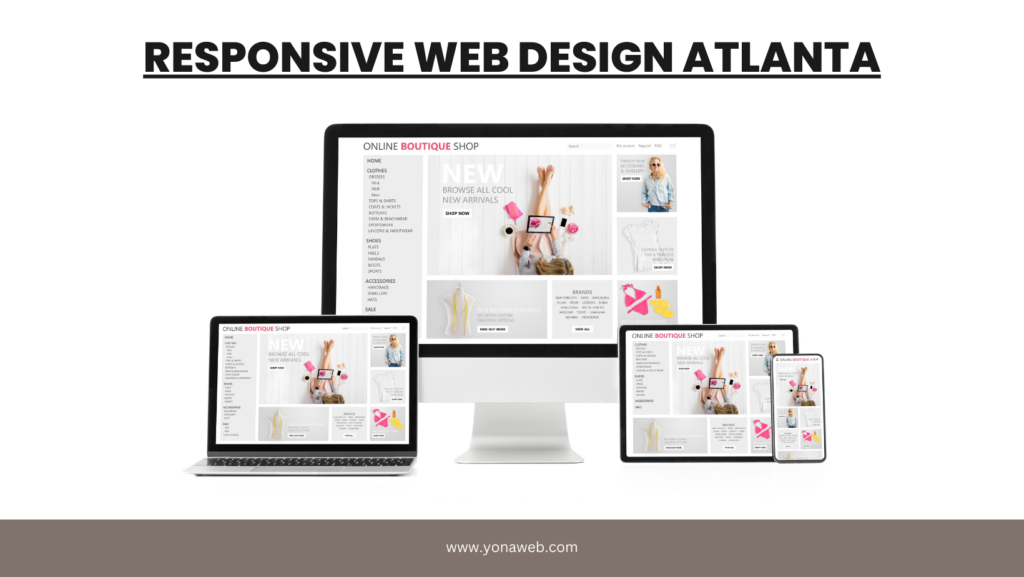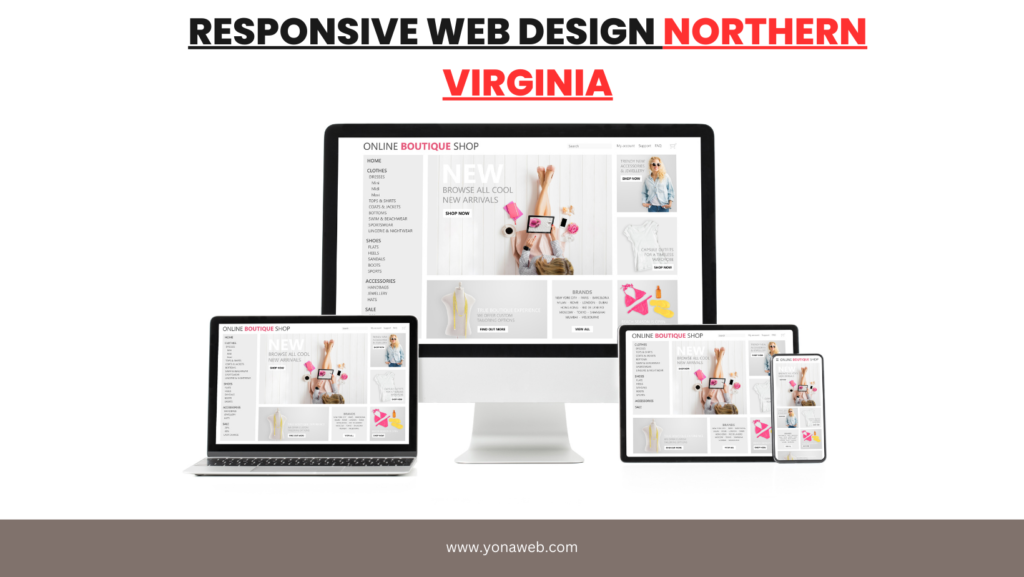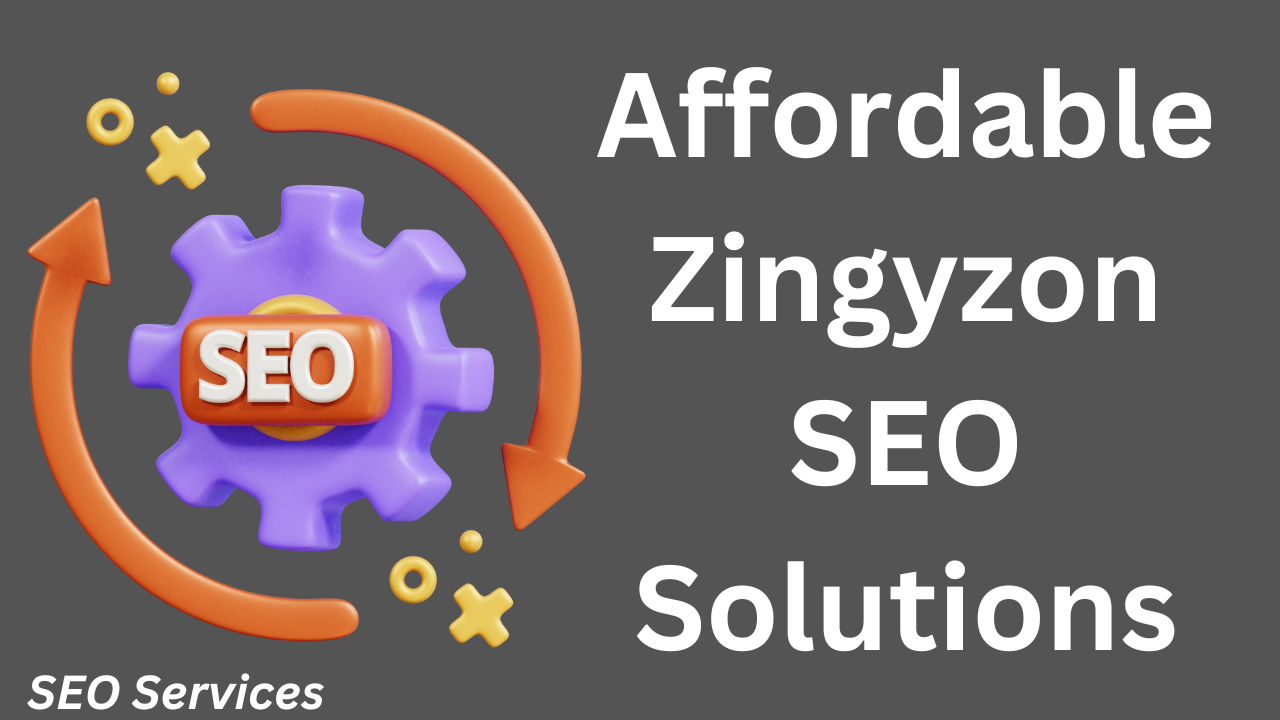As an eCommerce business owner, your website is your storefront, and its design plays a pivotal role in determining how customers perceive and interact with your brand. In today’s competitive digital marketplace, it’s not enough to simply have a functional website; you need an optimized, well-designed platform that offers a seamless user experience. This is where eCommerce web design services come into play.
But what exactly are eCommerce web design services? How can they transform your online store and drive growth for your business? Let’s dive into everything you need to know about these specialized services and why they’re essential for eCommerce success.
What Are eCommerce Web Design Services?

At their core, eCommerce web design services refer to the comprehensive set of tools, strategies, and processes used to create, enhance, or maintain an online store. Unlike traditional web design services, which focus on static websites or general content-based platforms, eCommerce web design services are specifically tailored to meet the unique needs of online retail businesses.
These services include a wide range of features that ensure your online store is visually appealing, easy to navigate, and optimized for conversions. From creating a mobile-responsive layout to ensuring secure and frictionless checkout processes, eCommerce web design services are geared toward making your online business as effective as possible.
Key Components of eCommerce Web Design Services
To fully understand the scope of eCommerce web design services, let’s break down some of the key components that define this specialized service offering:
1. Custom Design for eCommerce
When you hire a professional eCommerce web design service, one of the primary benefits is receiving a custom design that reflects your brand’s identity and appeals to your target audience. Unlike templated designs that can feel generic, custom design services ensure that your website stands out in the crowded digital marketplace.
A custom-designed eCommerce website is tailored to your specific needs, whether that’s emphasizing certain product categories, incorporating unique branding elements, or creating a visually engaging experience that aligns with your brand story. Custom design also allows for flexibility in layout, functionality, and style, making sure that your website is as unique as your business.
2. User Experience (UX) and User Interface (UI) Optimization

User experience (UX) and user interface (UI) are critical factors in eCommerce web design services. These elements define how easy, enjoyable, and efficient it is for visitors to navigate your site and find what they need. A poorly designed eCommerce site, where users struggle to locate products or experience slow loading times, can lead to high bounce rates and lost sales.
Professional eCommerce web design services focus heavily on optimizing UX/UI, ensuring that visitors can seamlessly browse through product categories, find detailed product descriptions, and quickly proceed to checkout. A user-friendly interface, combined with a smooth and intuitive shopping experience, can dramatically improve customer retention and increase conversions.
3. Mobile-Responsive Design
More than half of all web traffic today comes from mobile devices, making mobile responsiveness an absolute must for any eCommerce business. If your website doesn’t perform well on smartphones and tablets, you risk alienating a significant portion of your potential customers. Consumers expect fast-loading pages and seamless navigation when shopping on mobile devices, and any delay can lead them to abandon their carts or seek alternatives. Ensuring mobile responsiveness can mean the difference between gaining loyal customers or losing business to competitors with more mobile-friendly sites.
A responsive eCommerce website automatically adapts to different screen sizes, ensuring that menus, product images, and checkout options display correctly. Features like intuitive navigation and mobile-friendly payment options also help improve the shopping experience. With customers often making purchasing decisions on the go, having a responsive design ensures that your products and services are easily accessible, whether users are browsing during their commute or relaxing at home.
Mobile responsiveness isn’t just about aesthetics—it directly impacts performance metrics, such as bounce rates, session durations, and conversions. Websites that load slowly or look distorted on small screens see higher bounce rates, meaning users leave quickly without taking action. Search engines like Google also prioritize mobile-friendly sites in search rankings, meaning that a non-responsive site could harm your visibility and organic traffic, further impacting your revenue.
Investing in responsive design is not a luxury but a necessity for businesses aiming to thrive in the modern digital landscape. By meeting users’ expectations and creating a smooth experience across devices, eCommerce businesses can foster trust and encourage repeat purchases. With tools and platforms like Shopify or WooCommerce offering responsive themes, it’s easier than ever to implement a mobile-first approach. Prioritizing mobile responsiveness can boost engagement, enhance customer satisfaction, and ultimately drive long-term growth.
eCommerce web design services focus on creating mobile-responsive sites that adjust automatically to different screen sizes and devices. This means your online store will provide an optimal experience for users whether they’re shopping on their laptop, tablet, or smartphone. A mobile-responsive design not only improves the user experience but also boosts your SEO rankings, as Google prioritizes mobile-friendly sites in search results.
4. Product Page Optimization

Product pages are the heart of any eCommerce website. If your product pages aren’t designed to highlight key information and encourage conversions, you’re missing out on sales. eCommerce web design services ensure that your product pages are visually appealing, easy to navigate, and optimized to convert visitors into customers. Well-structured product pages showcase essential details such as product descriptions, prices, and availability, along with clear images. This information should be easy to find, reducing the chance of users leaving without making a purchase.
Beyond aesthetics, the functionality of product pages plays a crucial role in driving conversions. Features like zoomable images, customer reviews, and easy-to-use filters allow customers to explore products comfortably. Including “Add to Cart” buttons that stand out and concise call-to-actions (CTAs) encourages quicker decision-making. Additionally, ensuring that product pages are mobile-responsive enhances user experience, given the high number of shoppers browsing from smartphones and tablets.
Optimizing product pages also involves technical considerations that impact both performance and SEO. Fast loading times are essential since even a few seconds of delay can increase bounce rates. eCommerce web design services also implement SEO practices, such as structured data markup, to improve product visibility in search engine results. Creating engaging meta descriptions and implementing keyword strategies ensures that your products rank higher, driving organic traffic to your store. By focusing on both design and performance, your product pages become powerful tools to capture visitors’ attention, keep them engaged, and convert them into loyal customers.
This includes:
- High-quality product images: A professional eCommerce web design service will ensure your product images are clear, high-resolution, and optimized for fast loading. Many services also offer image zoom features, 360-degree views, and even video integrations to give customers a more immersive shopping experience.
- Engaging product descriptions: Good web design also involves the strategic placement of product descriptions. Clear, concise, and informative product descriptions help customers make informed purchasing decisions, reducing the likelihood of returns or dissatisfaction.
- Calls to Action (CTAs): Strong CTAs, such as “Add to Cart” or “Buy Now,” are strategically placed on product pages to encourage customers to take immediate action. These buttons should be easy to find, well-designed, and drive the desired behavior.
5. Checkout and Payment Gateway Integration
One of the most crucial aspects of eCommerce web design services is optimizing the checkout process. If your checkout flow is complicated or requires too many steps, customers are likely to abandon their carts. In fact, cart abandonment rates are notoriously high, with studies suggesting that up to 70% of shopping carts are abandoned.
A well-designed eCommerce site includes a streamlined and secure checkout process. This often involves simplifying the number of steps required to complete a purchase, integrating various payment options (credit cards, PayPal, Apple Pay, etc.), and ensuring that the process is as smooth as possible. Payment gateway integration is also vital, ensuring that all transactions are secure and that customers feel confident when entering their payment details.
6. Search Engine Optimization (SEO)
It’s not enough for your eCommerce site to look good; it also needs to be found by potential customers. That’s where SEO comes into play. eCommerce web design services often include SEO strategies designed to improve your website’s visibility in search engine results. This means more organic traffic and, ultimately, more sales.
Key SEO elements included in eCommerce web design services are:
- Site architecture: A clean, organized site structure helps search engines crawl your website efficiently and understand what it’s about.
- Page speed optimization: Fast-loading websites rank higher on Google and provide a better user experience.
- Mobile optimization: As mentioned earlier, mobile responsiveness is critical not just for UX, but also for SEO. Google rewards mobile-friendly sites with better search rankings.
- On-page SEO: This includes keyword optimization, meta descriptions, alt text for images, and more, ensuring your product pages are optimized for the search terms that your potential customers are using.
The Benefits of Investing in eCommerce Web Design Services
Now that you understand the key components of eCommerce web design services, let’s explore the tangible benefits of investing in these services for your online business:
1. Increased Conversion Rates
A well-designed eCommerce website drives conversions by combining smart design elements and thoughtful development. Optimized product pages play a pivotal role in converting visitors into customers by clearly displaying information, features, and reviews. With effective eCommerce web design services, businesses can create engaging layouts that inspire customers to explore product lists, make comparisons, and confidently complete their purchases.
Development services also focus on streamlining the checkout process, ensuring that it is easy to navigate and free from unnecessary steps. Clean, responsive designs minimize cart abandonment and help customers move through the commerce funnel efficiently. Including examples of simple, frictionless checkout experiences can serve as inspiration for businesses seeking to refine their own sites.
A seamless shopping experience is essential for customer satisfaction. Websites that are responsive across devices, load quickly, and provide intuitive navigation reflect thoughtful design and good practices. Using tips from leading design examples ensures eCommerce businesses can create sites that meet customer expectations and increase conversion rates.
2. Enhanced User Experience
User experience (UX) is essential when building online stores. A simple, visually appealing design makes it easier for customers to browse, check product details, and complete purchases. Designers can guide the process by helping businesses choose the right visual elements that align with the brand and resonate with the target audience. Ensuring every step of the site is intuitive encourages visitors to explore products and return for future purchases.
Mobile responsiveness plays a key role in how users engage with eCommerce stores. With more people shopping on smartphones, it’s crucial that designs adapt seamlessly across devices. A website that responds smoothly to different screen sizes keeps customers from getting frustrated, ensuring they can browse and buy wherever they are. Designers use ideas such as collapsible menus and easy-to-tap buttons to enhance the mobile shopping experience.
A well-planned UX strategy helps sellers create a positive journey that drives word-of-mouth recommendations. Satisfied customers are more likely to recommend stores to others, boosting visibility and sales. Each step, from product discovery to checkout, should be optimized to deliver a smooth and enjoyable experience, guiding users effortlessly through their buying process.
3. Better Search Engine Rankings
SEO is essential to helping eCommerce websites discover new audiences organically. Professional developers and designers focus on building sites with optimized templates that ensure search engines can easily index and rank them. These templates are often crafted to include elements like structured data and responsive layouts, which align with SEO best practices and improve visibility on search results pages.
By integrating SEO strategies throughout the project, from content creation to website structure, developers ensure smooth user experiences and faster page loading times. Web design services play a key role in meeting SEO requirements, including optimizing metadata and ensuring mobile-friendliness. This alignment with Google’s ranking factors increases the chances of higher organic traffic, translating into more opportunities for customers to discover the site.
The eCommerce community benefits greatly from articles and resources that guide businesses in improving SEO. Ongoing SEO practices, such as content updates and link building, help sustain visibility. A well-optimized site not only attracts more visitors but also builds trust, further contributing to higher conversion rates over time.
4. Stronger Brand Identity
A well-designed eCommerce website shapes how customers perceive your brand from the very first interaction. Apps and platforms like Magento allow businesses to share their unique identity through customized designs and features, enhancing their brand appeal. By aligning the design with your brand’s values and aesthetic, you create a cohesive digital experience that resonates with your audience and builds lasting trust.
Establishing a strong brand presence through your eCommerce site helps differentiate your business from competitors in an increasingly crowded market. Many brands succeed by focusing not just on product offerings but also on how they present them online. Thoughtful design choices—like color schemes, typography, and imagery—ensure that your site reflects your brand identity while being visually engaging for visitors.
Incorporating apps and integrations through platforms like Magento further enriches the user experience. These tools allow you to share promotional content, personalize the shopping journey, and improve engagement, ultimately increasing the appeal of your online store and boosting customer retention.
5. Reduced Cart Abandonment
A seamless checkout process is vital for any eCommerce website, as it minimizes friction and reduces cart abandonment. By implementing well-thought-out checkout designs, businesses ensure customers have a hassle-free experience. eCommerce web development services optimize the flow by limiting unnecessary steps, offering guest checkout options, and integrating secure payment gateways, all of which encourage visitors to complete their purchases.
Professional web design services focus not only on aesthetics but also on the usability and performance of websites. An effective design guides users smoothly through the buying process, ensuring that every click feels intuitive. Services like these also emphasize mobile optimization, which is crucial for appealing to today’s on-the-go shoppers, further enhancing the checkout experience.
Incorporating secure and reliable payment options is another critical element of eCommerce development. Websites that offer trusted gateways, like PayPal or Stripe, create a sense of safety for customers, encouraging them to finalize their purchases without hesitation. These well-optimized services foster customer satisfaction and can significantly increase conversion rates.
Conclusion: Why eCommerce Web Design Services Matter for Your Business
In today’s digital-first world, the success of your eCommerce business hinges on the quality of your website. From custom design and mobile responsiveness to SEO and checkout optimization, eCommerce web design services are essential for creating a user-friendly, high-converting online store.
By investing in professional eCommerce web design services, you’re not just improving the look and feel of your site—you’re also enhancing user experience, boosting your search engine rankings, and increasing your sales potential. In a competitive marketplace, these services are the key to staying ahead and ensuring long-term business growth.
If you’re ready to take your online store to the next level, consider partnering with an experienced eCommerce web design service provider that understands the intricacies of designing for eCommerce success
FAQ:
1. What is eCommerce web design?
eCommerce web design focuses on creating online stores that provide a smooth shopping experience. This type of design includes features like product pages, shopping carts, checkout flows, and secure payment gateways. Additionally, it ensures the website is mobile-responsive, fast-loading, and optimized for search engines (SEO) to attract traffic and convert visitors into customers.
2. What is an example of an eCommerce website?
Popular eCommerce websites include platforms like Amazon, eBay, and Shopify stores. Each of these offers diverse product categories, intuitive navigation, and secure payment options. Smaller independent brands also create their own eCommerce websites using tools like WooCommerce or Magento, tailored to specific audiences and product niches.
3. How much does an eCommerce website cost?
The cost of an eCommerce website can vary significantly based on complexity, features, and platform.
- DIY options: Platforms like Shopify or Wix charge monthly fees starting from $30-$50.
- Custom development: Hiring a designer or agency can cost between $2,000 to $10,000 or more, depending on the features and integrations.
Additional costs may include domain fees, hosting, and payment gateway fees.
4. How do I create my own eCommerce website?
To create your eCommerce website, follow these steps:
- Choose a platform: Decide between Shopify, WooCommerce, Magento, or other platforms.
- Select a domain and hosting service: You need a web address and hosting plan (e.g., from Namecheap or Bluehost).
- Design your store: Use templates or hire designers to create engaging product pages and intuitive navigation.
- Add payment gateways: Integrate PayPal, Stripe, or other secure payment processors.
- Optimize with SEO: Ensure your website is searchable by implementing SEO best practices.
- Test and launch: Test your site thoroughly before making it live to ensure everything works smoothly.
These steps will help you launch your store efficiently and begin selling products online.
“Launch Your Dream eCommerce Store for Just $100!”
Build a fully functional eCommerce website today for only $100! Our eCommerce web design package ensures a professional, responsive, and conversion-focused store that’s optimized for all devices. Whether you’re selling fashion, electronics, or handmade crafts, this affordable service covers everything—from sleek product pages to seamless checkout flows. Don’t miss out on potential customers—kickstart your online business now with a high-quality store designed to convert visitors into loyal customers!



